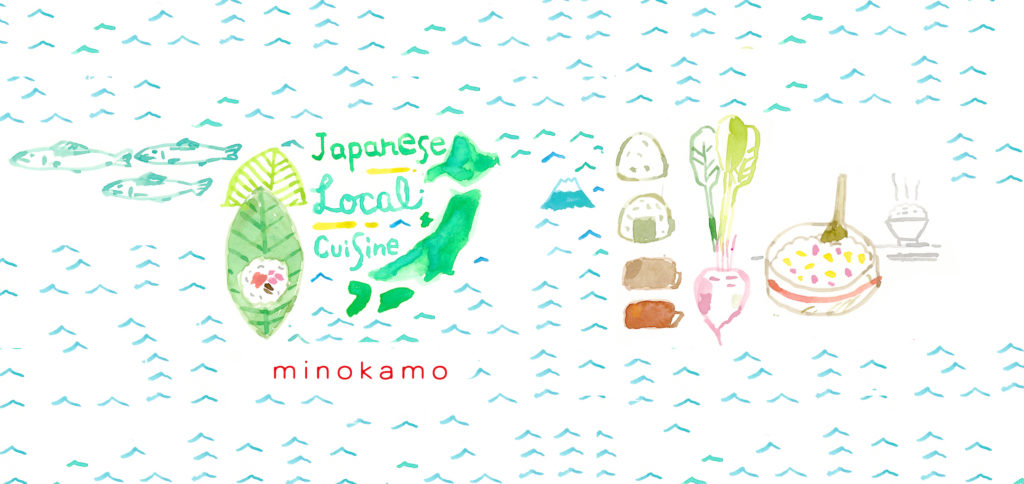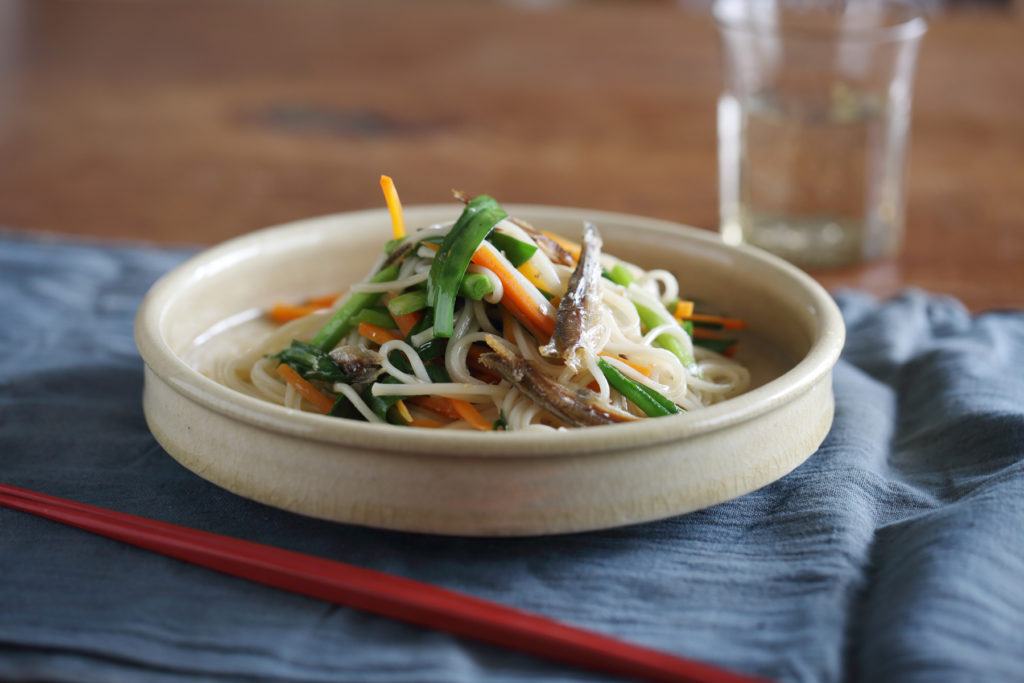
Ingredients(serves 1)
80 g somen noodles
1/2 whole carrot
1/2 bundle nira / garlic chives
6 (large)–8 (small) niboshi (iriko) / dried sardines
1 1/2 tbsp usukuchi shoyu / light soy sauce (or common soy sauce)
1 tbsp olive oil
150 cc water
Serve with vinegar on the side
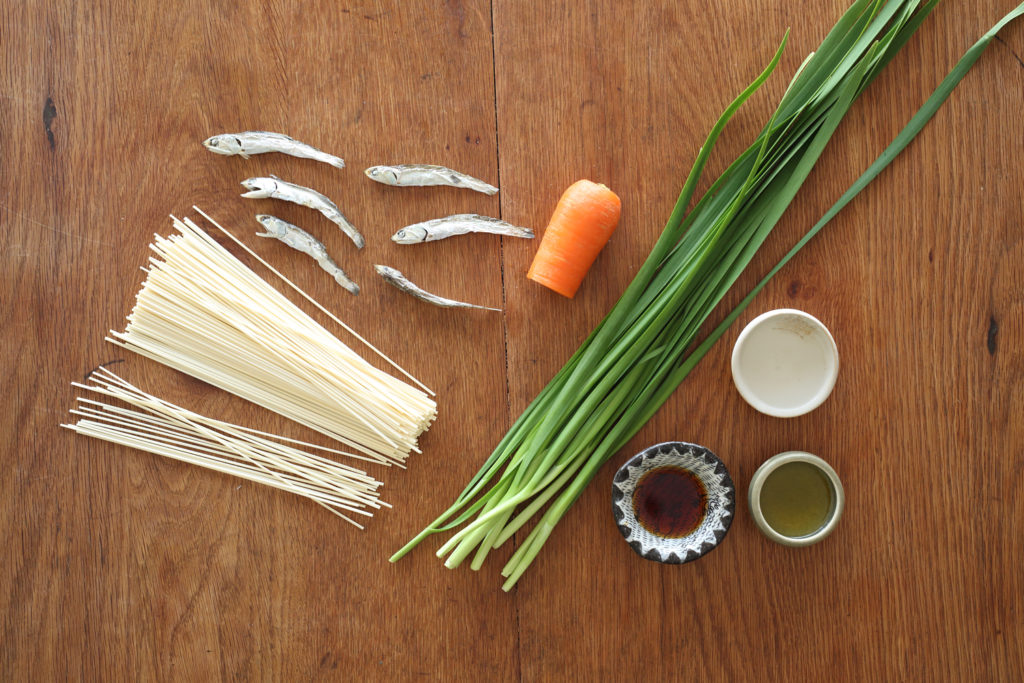
How to Make
1. Peel and shred the carrot. Small niboshi may be used as is; if large, remove the head and gut, and split in half.
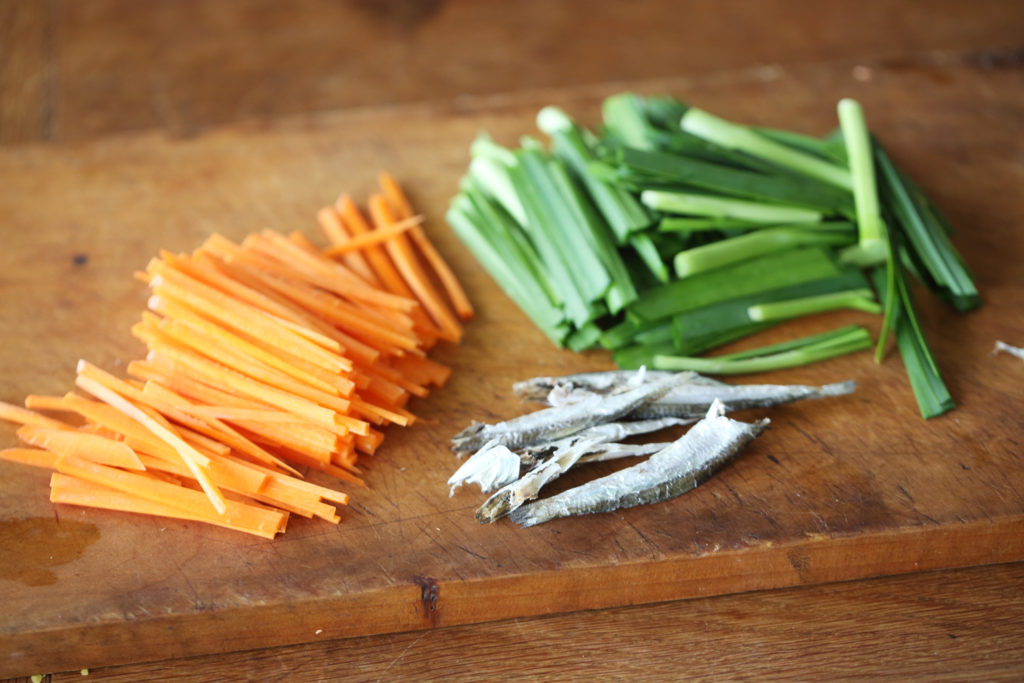
2. Boil the somen until firm and chill in water. Complete this step immediately before heating the skillet.
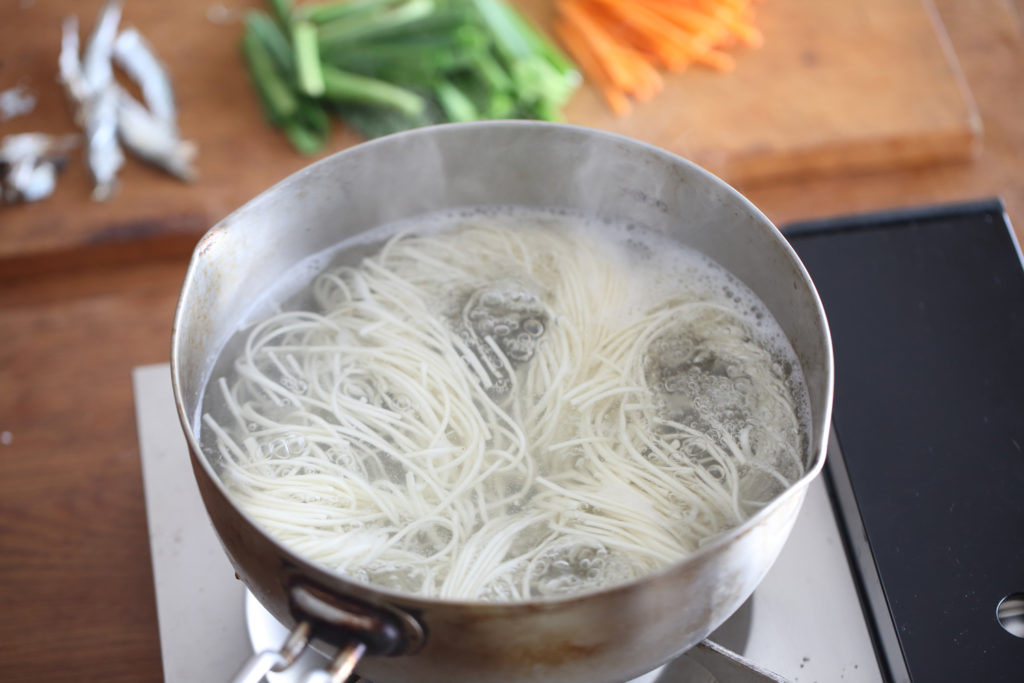
3. Add the niboshi to the skillet and parch over medium heat. Listen for a soft popping sound that signals a fragrant finish. Add the water and carrot, and simmer over high heat. When the water has been reduced to half, add and mix the olive oil, soy sauce, and garlic chives. Add and mix the somen. Trickle the vinegar at the table if desired.
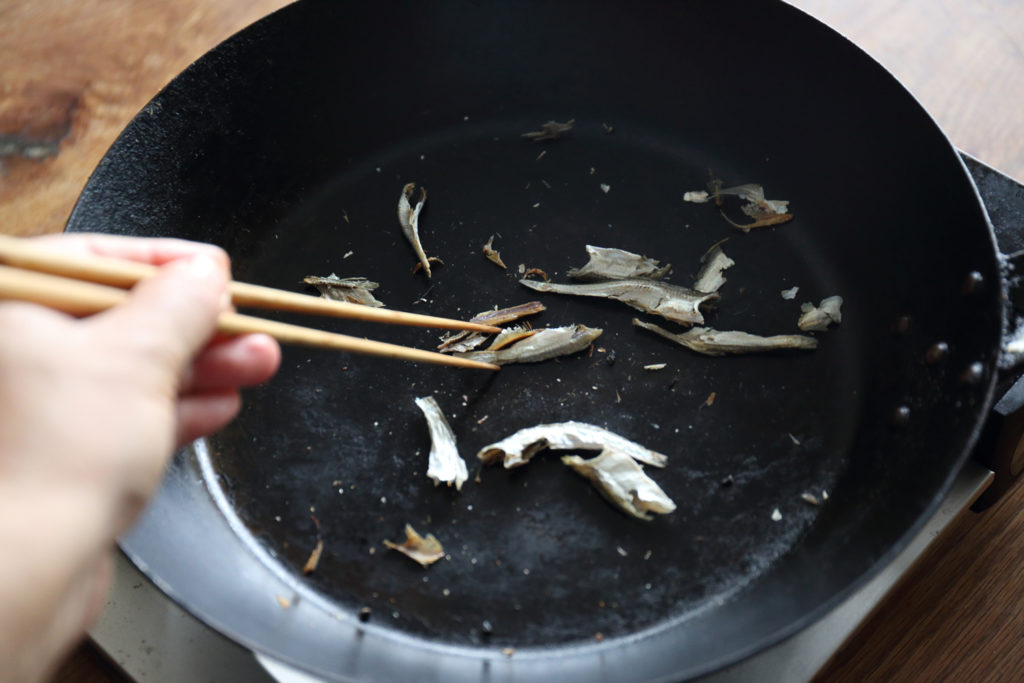
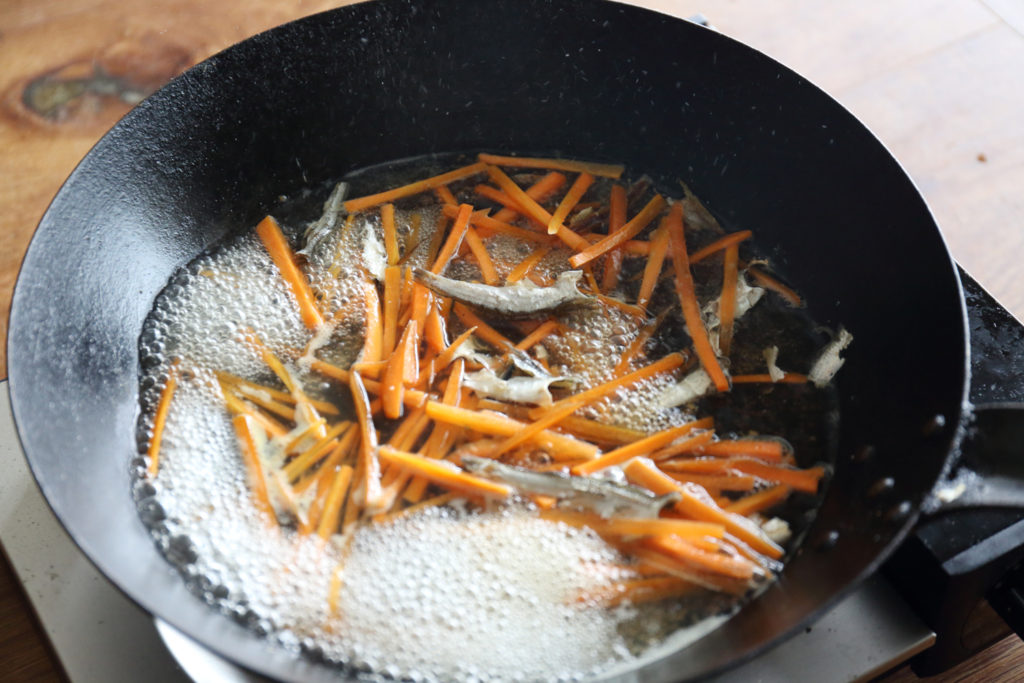
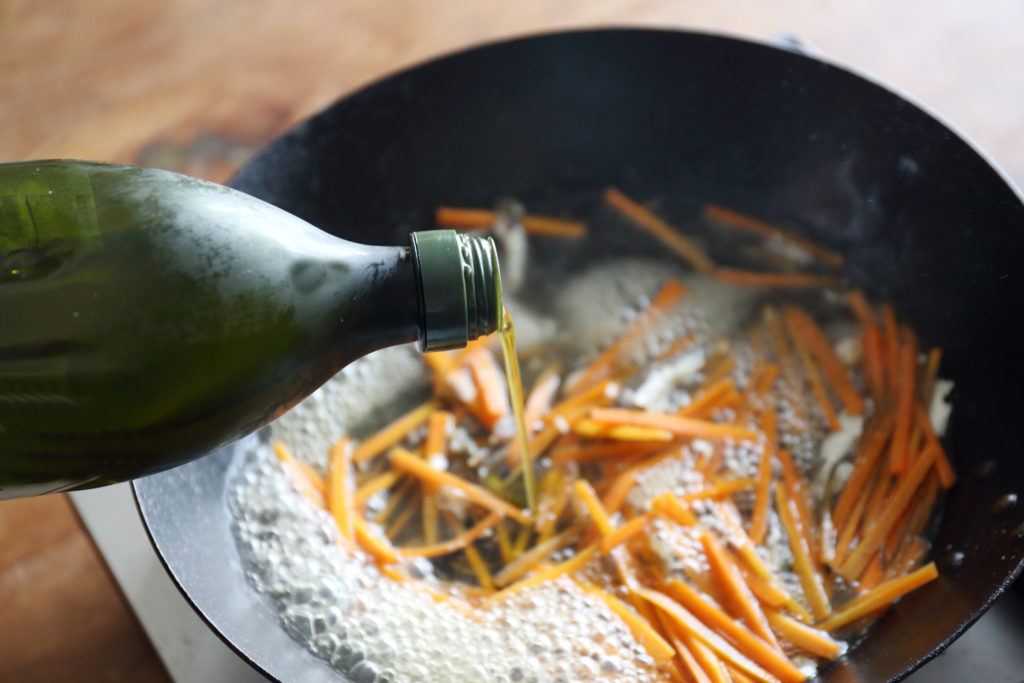
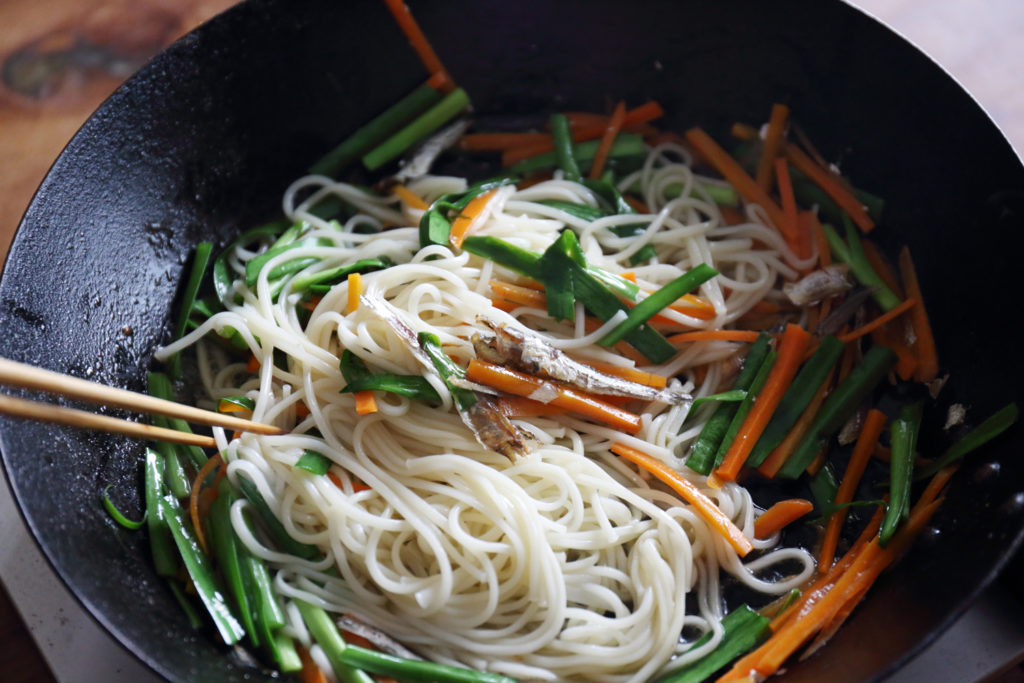
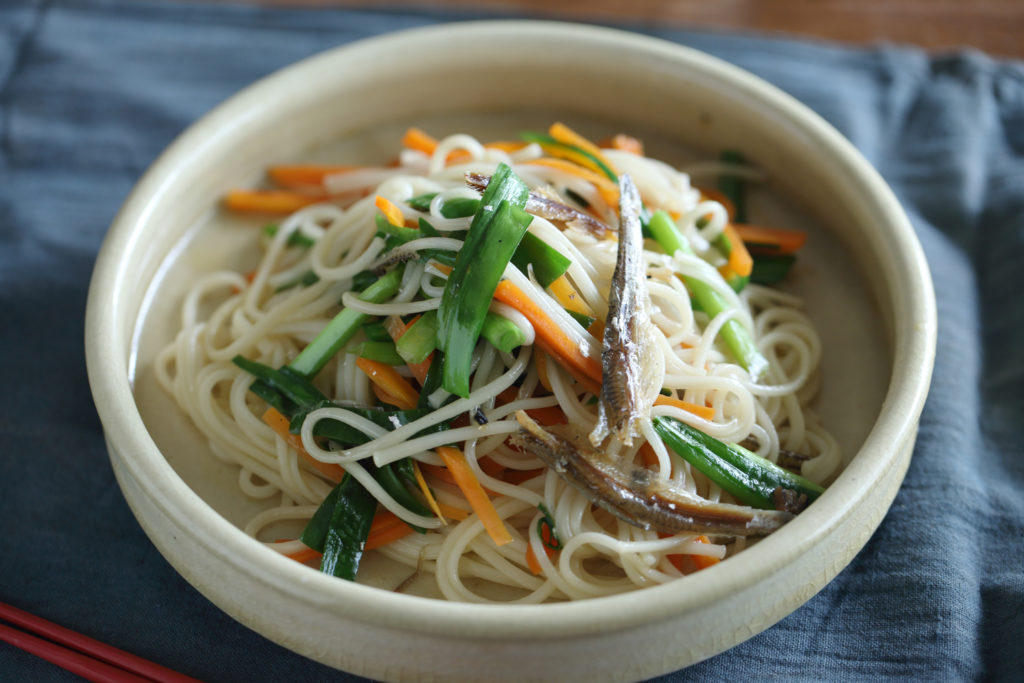
I took a trip to Amami Oshima Island hoping to explore the unique doro-zome (mud dyeing) technique and ended up being enchanted with the scenery and the food too. Amami cuisine is full of delicious delicacies like yagi-jiru (goat soup), ikasumi-jiru (squid ink soup), and a broad variety of pork dishes. One recipe that seemed easy to make was abura-zomen, or oiled somen noodles. Niboshi, also called iriko, is a common ingredient of Japanese dashi stock. Whereas the dried sardines are usually tossed out afterward, surprisingly, this dish uses them as well as the stock. I enjoyed my dish together with brown sugar shochu made from island-grown sugarcane.
Abura-zomen was originally served on a large dish on special occassions, particularly the island’s Hachigatsu Odori (August Dance) festival. Today, it is part of the everyday diet and continues to be cooked and enjoyed at restaurants and at home. The ingredients vary from family to family. Some sources say only niboshi was used, and not vegetables, in the beginning. A favorite ingredient on the island is garlic scapes called furu. If you’re outside Japan, and somen and niboshi are hard to come by, try substituting the wheat noodles with rice noodles, pasta noodles, any other thin noodles, and the dried sardines with dried shrimp. Cooking and eating abura-zomen has made me want to visit Amami Oshima all over again.
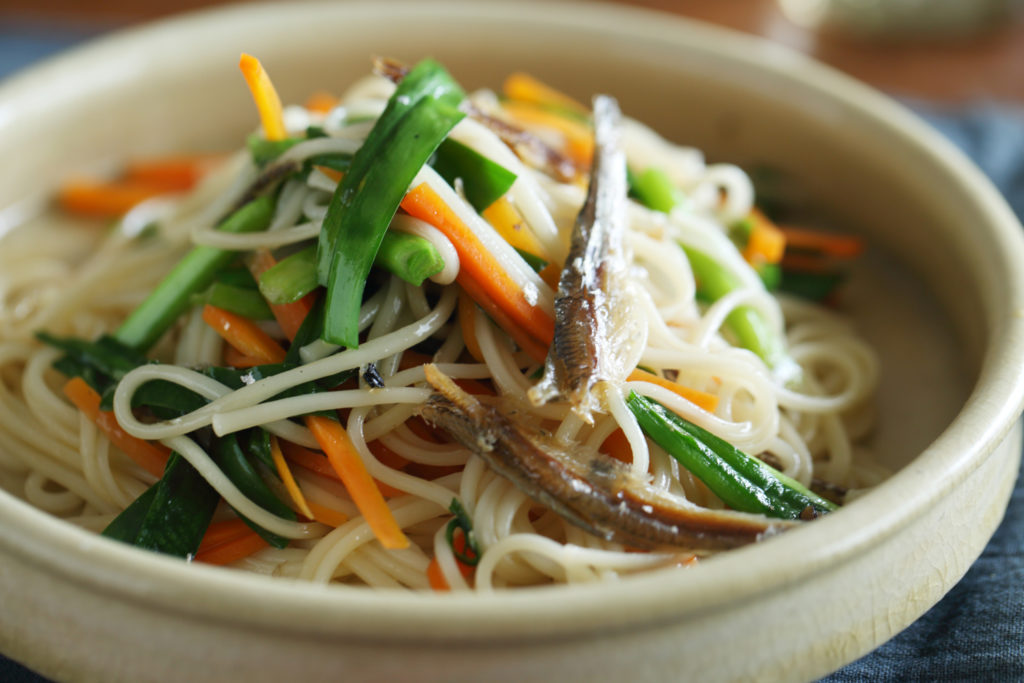
minokamo | Cookery expert / Photographer
Gifu Prefecture native minokamo’s culinary adventures were inspired by her fond childhood memories of cooking with her grandmother. She researches, writes about, and arranges regional dishes that capture, through their preparation and presentation, sensory enjoyments inspired by local climate, history, and lifestyles. Her book, Ryori tabi kara tadaima is a collection of recipes from minokamo’s visits to homes up and down Japan.
